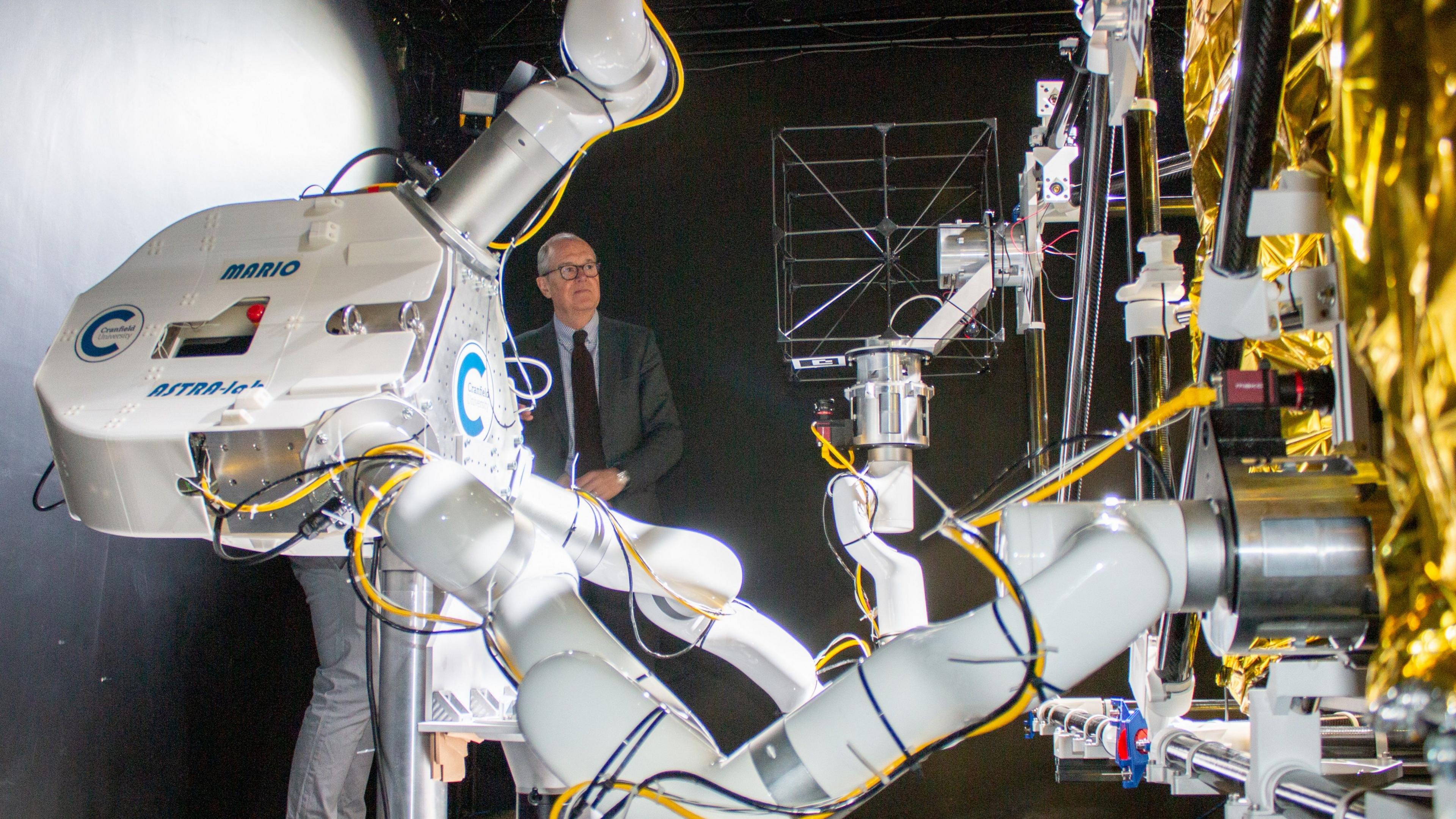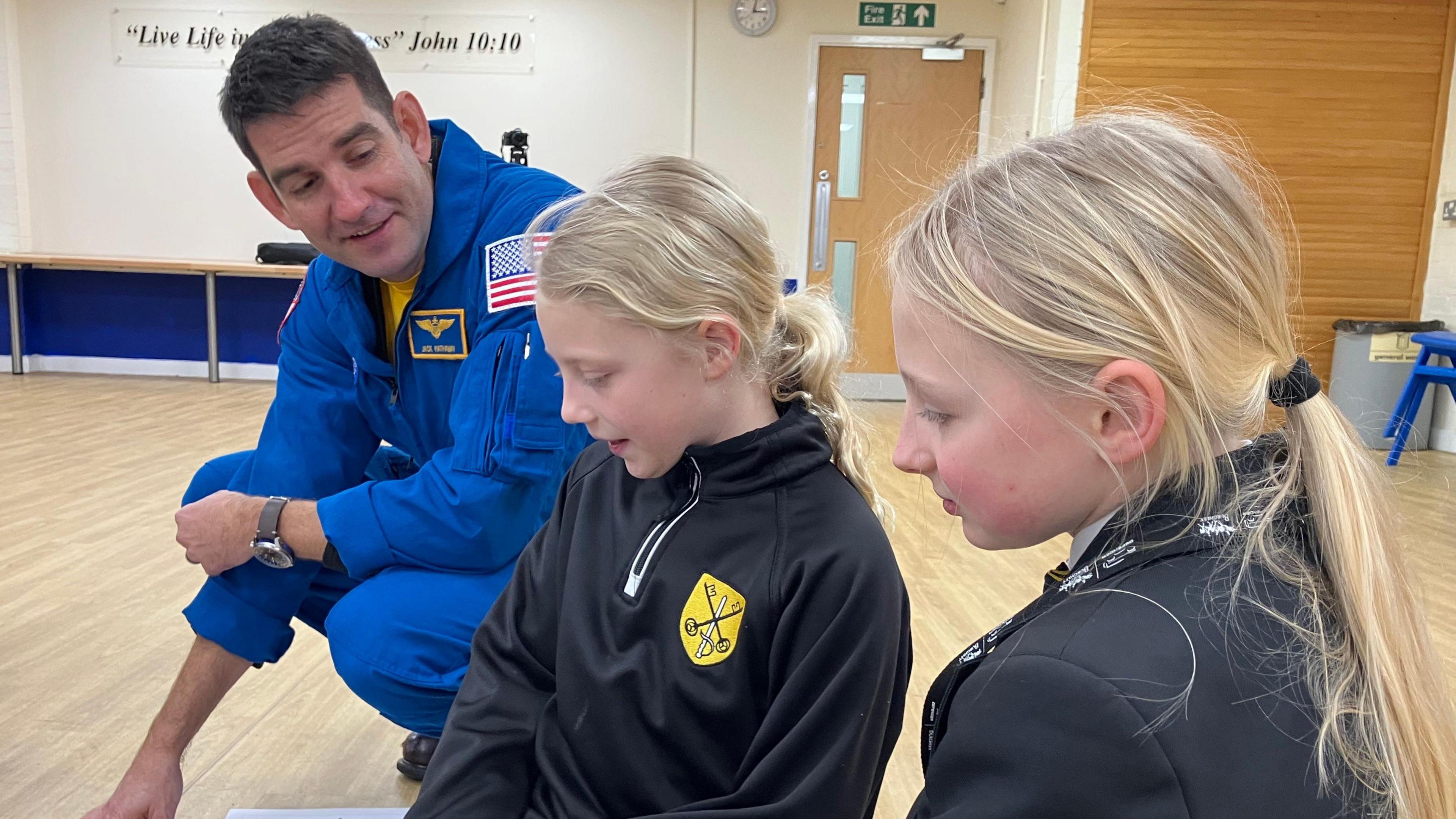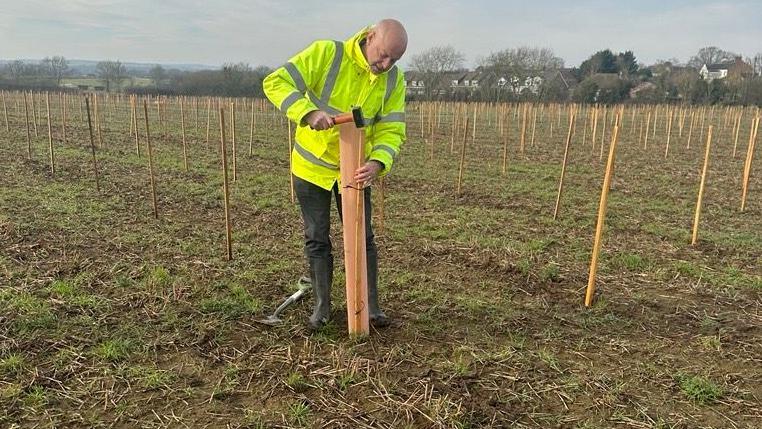Lab replicates outer space to test new robot

Mario is a new robot being tested at Cranfield University
- Published
Scientists have built a lab that replicates the conditions of space to test how robots could assemble large structures in orbit.
Cranfield University is testing Multi-Arm Robot for In-Orbit Operations (Mario) at the Astra-Lab in Cranfield, Bedfordshire, a facility simulating the space environment.
Mario's development aims to make space-based projects such as solar power panels and large telescopes viable.
The Astra-Lab and Mario will be used for testing various space missions and provide both academics and students with hands-on experience in space robotics.
Astra-Lab stands for Advanced Space Technology for Robotics and Astronautics laboratory.
The purpose-built facility has a friction-free floor and a projector system to replicate light from the Sun.
It also uses a compressed air system to simulate working in free-floating conditions.

Astra-Lab was opened by Lord Patrick Vallance, minister for science
Mario will initially be controlled from Earth with a future goal of autonomous operation.
It is hoped large structures can be sent into space in a flat-packed format, alongside a robot like Mario to carry out assembly.
Cranfield's Dr Leonard Felicetti designed and built the robot.
"Having a cutting-edge facility like this gives us an opportunity to be right at the forefront when it comes to both space robotics and guidance, navigation and control," he said.
Get in touch
Do you have a story suggestion for Beds, Herts & Bucks?
Follow Beds, Herts and Bucks news on BBC Sounds, Facebook, external, Instagram, external and X, external.
Related topics
- Published26 March 2024

- Published11 January

- Published8 February
